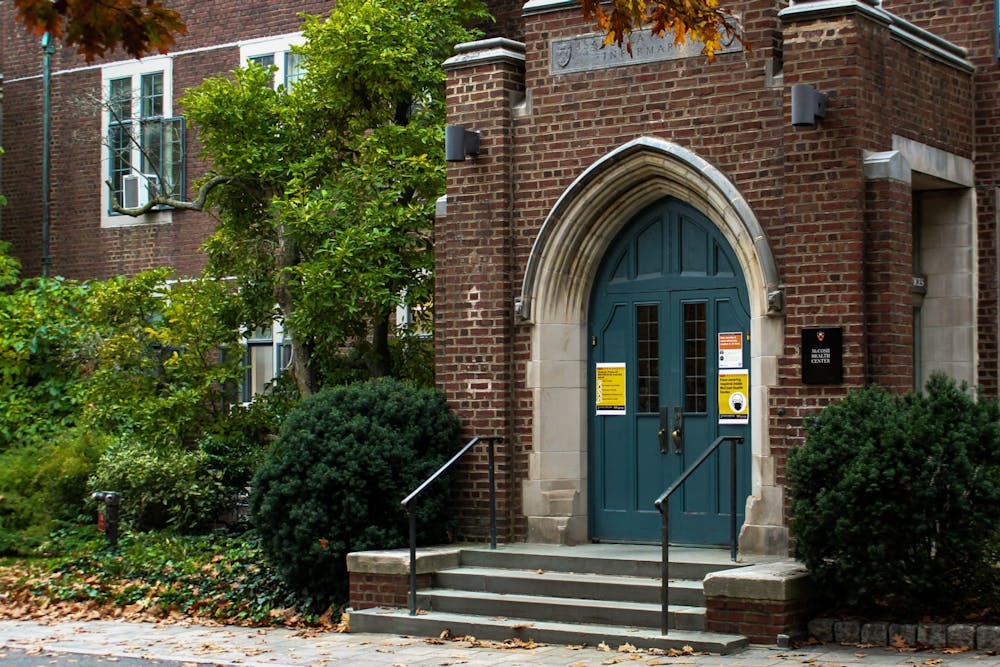One morning in September, I woke up with a fever and a sore throat. After almost two hours of being sent in circles on the phone, I was asked to come to McCosh for a COVID-19 test. I was told, “Bring everything you might need for 10 days of isolation. If you test positive, you can’t go back to your room.”
I spent the next 20 minutes frantically throwing things into a suitcase. How would I know what I needed for 10 days? Then I lugged all my earthly possessions down to McCosh, trying to find paths without stairs and avoiding eye contact with people I passed. It felt like, having just arrived on campus, I was headed toward a nightmare. I didn’t have COVID-19 that day. But the fact that isolation felt so cataclysmic points at a larger problem.
COVID-19 looks like it’s going to be part of our future for quite some time now. Isolation has, time and time again, proven to be our most effective measure at containing the virus. Yet, unlike mask wearing, isolation has major costs: we’re segregating people from the student body to keep the rest of us safe. At the height of the pandemic, isolation was justifiable, even morally required. It may still be justifiable as we distribute vaccines to kids. But it cannot be part of a long-term plan to address COVID-19.
I spoke to Brad Phelps ’22 about his experience in COVID-19 isolation earlier this semester.
“I would say it was better than expected, but still not optimal,” he assessed. While Phelps appreciated the extra time to himself, there are still too many aspects of isolation that are needlessly onerous. “They were like, you have an hour, pack for 10 days and you are going to go to this spot,” he told me. “The person who called me was like, you might want to bring some sheets if you have an extra set, or if you have a comforter and a blanket, because what we’ve got in the room isn’t great.”
Many students might not have an extra set of sheets, especially a set they can pack in just one hour and then drag across campus along with everything else they might need for 10 days. Students in isolation can’t do laundry and the University is not permitting deliveries. That harms some students more than others. While Phelps was satisfied with the food and felt the staff was responsive, the University has a pretty terrible track record at providing vegan and vegetarian options. If the food is intolerable for some students, they have very few options while serving their 10 days. It’s precisely this lack of control which makes the prospect of isolation so miserable.
After massive outcry at the beginning of the semester, the University backtracked on its vague plan to have students FaceTime into class if they’re in isolation, promising students could Zoom in or watch a recording. That has not panned out to any significant degree. “My professors were not really recording their classes,” Phelps admitted. Professors have now been instructed to record, but the University has not provided the equipment necessary to make that recording effective beyond a Zoom camera just pointing at a corner of the blackboard.
Alienated from classes, peers, and extracurricular activities, and trapped in a room with no escape for 10 days, isolation can have major negative effects. “There were seconds when I would remember I was on a college campus and it was, like, very surreal,” Phelps noted. And with the University floating vague, potentially draconian “disciplinary consequences” for violations, the whole system feels like a prison.

Why have we set up isolation in this way? Part of it stems from the fact that a stereotype emerged last year on college campuses that students who were in isolation were there because they were out partying, breaking campus protocols. Isolation became, in popular myth, a form of punishment for COVID-19 rule breaking. But especially now, getting sent to isolation is just bad luck. Isolation isn’t and shouldn’t be seen as punishment.
We can do a lot more to make isolation tolerable. Deliveries should be allowed, and the administration can enlist students to fetch food from a dining hall of choice for isolated students. We can make an isolation golf cart so students don’t have to frantically pack and then drag their stuff to 1976 Hall. Exercise outdoors should be allowed in designated areas. We as the student body should make a conscious effort to engage with students in isolation both through more inclusive normal events and specific events for students in isolation. Every student in isolation hearing from someone every single day should be the minimum standard we should be aiming for.
But these steps don’t fix the fundamental problem of a lack of control. Which is why, not immediately, but at some point, COVID-19 isolation has to end. If COVID-19 does become endemic, we cannot keep isolating people far into the future. And if we ever have to make a choice between keeping masks and continuing isolation, we need to end isolation and stick with the masks. Admittedly, some of those decisions aren’t Princeton’s to make: a campus message in September noted “external rules” influence policies for COVID-19 isolation. But Princeton has a fair amount of power to influence those laws and must make sure isolation doesn’t last long after it’s needed.
Quarantine and isolation have a history of alienation. When the Bubonic Plague swept through Bombay in 1896, British officials acted to quarantine individuals with symptoms. But they acted with enormous cruelty, destroying families and property, sparking a backlash that would influence the Indian independence movement. We need to make sure that the costs of public health measures are weighed properly. The new normal may not look like it looked in 2019, but it cannot include the perpetual isolation of the infected.

Rohit Narayanan is a sophomore electrical engineering major from McLean, Virginia. He can be reached at rohitan@princeton.edu.








